What is Binh Dinh Museum about?

Located in the center of Quy Nhon, Binh Dinh Museum presents the province’s history through a mix of cultural artifacts and historical exhibits. The displays move from ancient Cham sculptures and relics to the turbulent years of the French and American wars, before ending with a section dedicated to Ho Chi Minh and his connection to the region. It offers visitors a compact overview of how Binh Dinh’s past has shaped its identity today.
Highlights of Binh Dinh Museum
1. Cham artifacts and sculptures
One of the strongest sections of the museum is its Cham collection, which includes stone carvings, architectural fragments, and religious icons from the many towers that once dotted Binh Dinh. The standout piece is a striking Shiva statue, but there are also smaller sculptures and fragments that help you imagine the scale and artistry of Cham temples in their prime.
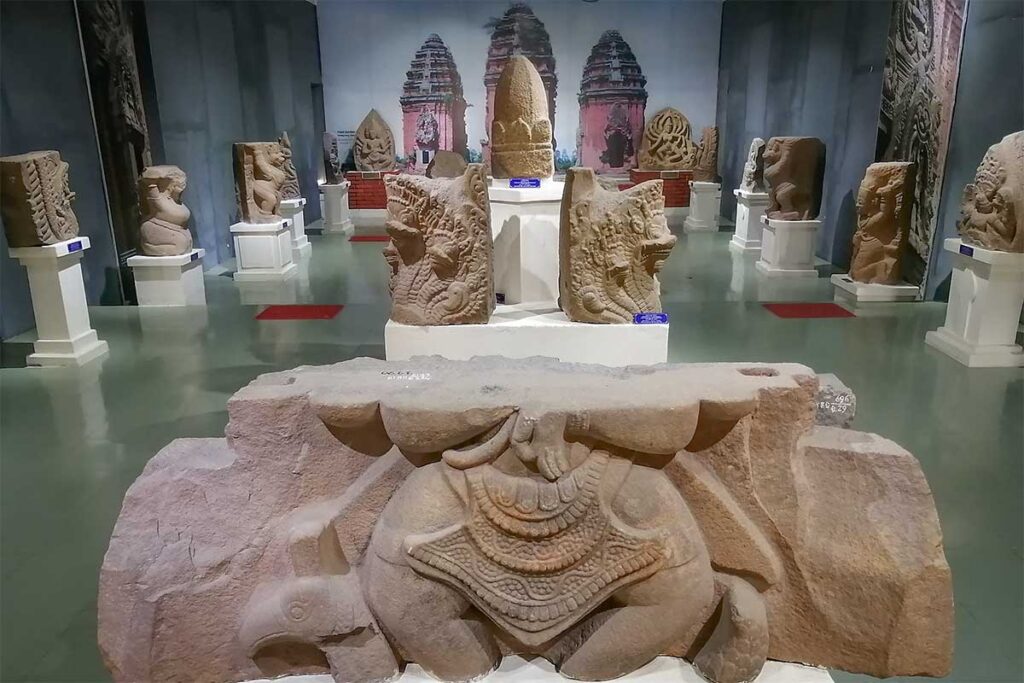
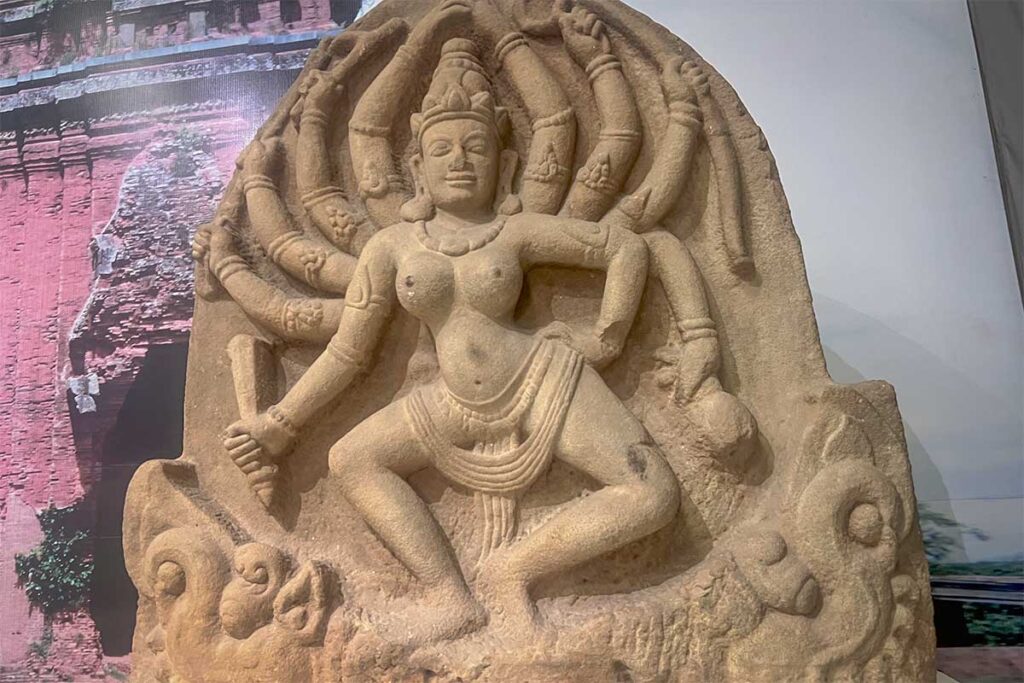
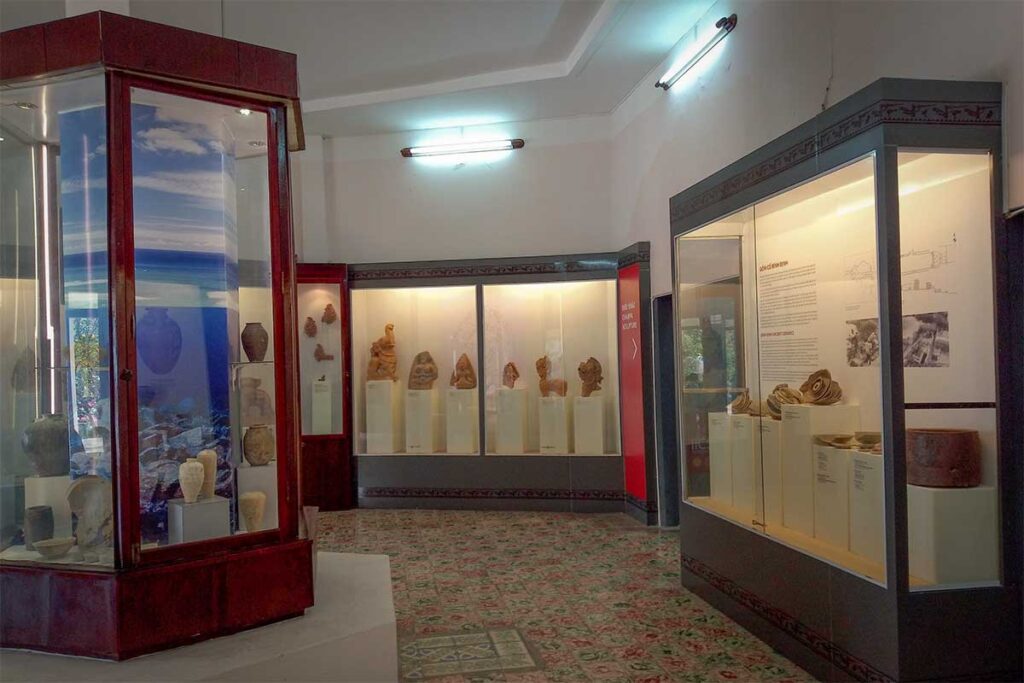
2. Local culture and traditions
Beyond the ancient relics, the museum also preserves objects tied to Binh Dinh’s cultural identity. Exhibits highlight tools from daily life, folk traditions, and references to the province’s famous martial arts heritage. Though modest in size, these displays connect visitors with the rhythms and practices of the local people.
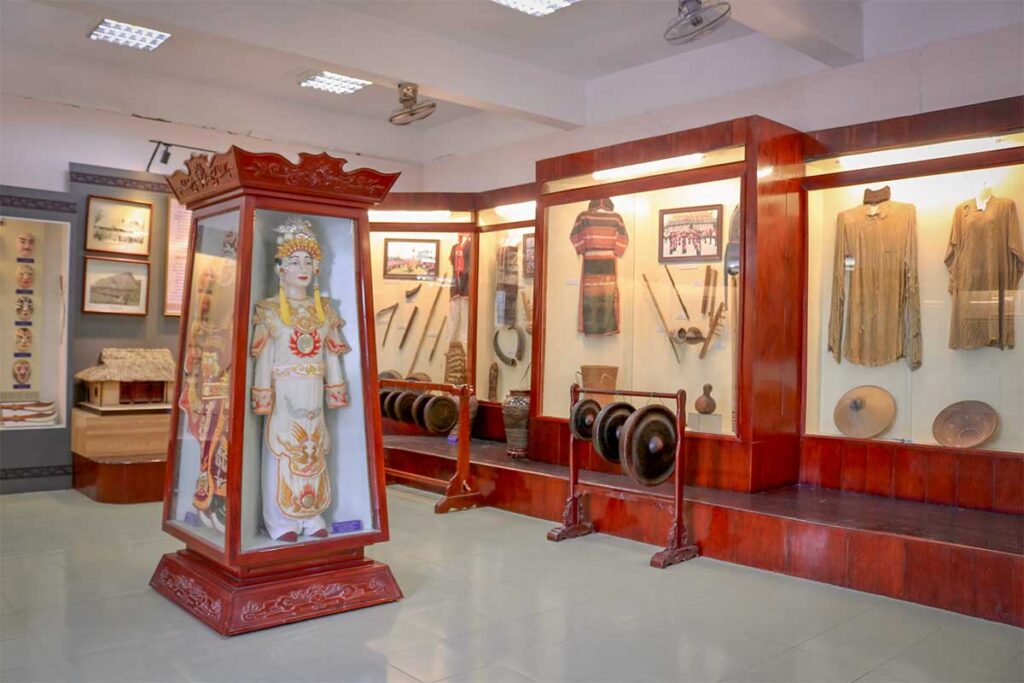


3. French and American wars
Several rooms focus on the wars of the 20th century, with weapons, uniforms, and photographs documenting local resistance against both the French and the Americans. The presentation follows the official Vietnamese narrative and includes sometimes graphic imagery, such as battlefield photos and scenes of devastation around Quy Nhon. These exhibits are sobering but give insight into how recent history shaped the region.
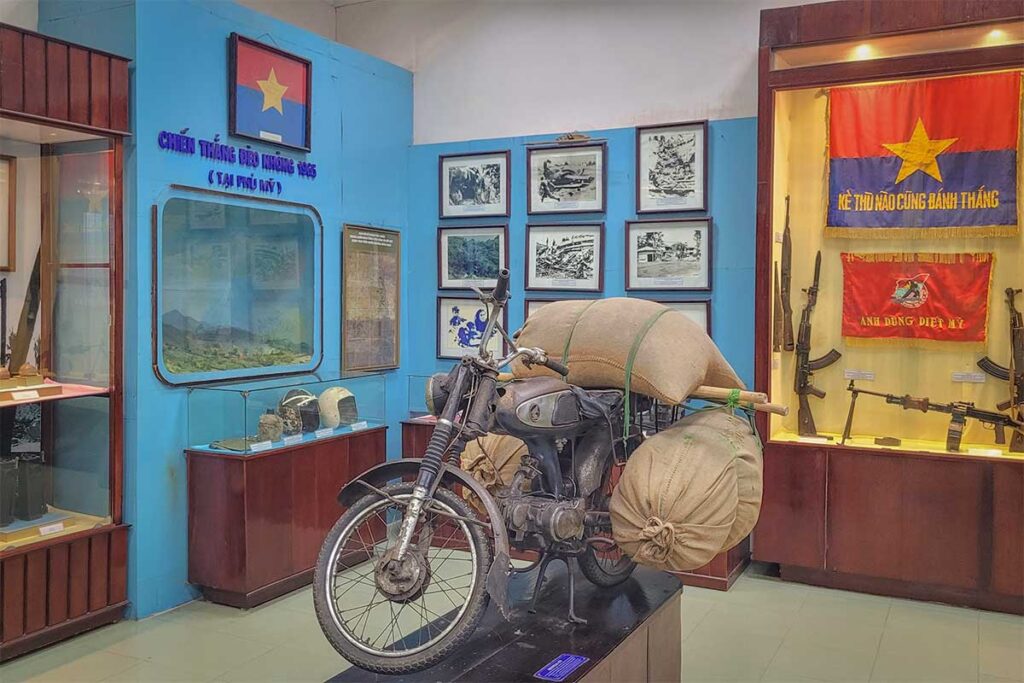

4. Ho Chi Minh memorabilia
The upper floor is dedicated to Ho Chi Minh and his links with Binh Dinh. Personal items on display include his hat, cane, and sandals, alongside documents and photos emphasizing his role in inspiring the province during wartime. This section rounds out the museum’s narrative by tying national history to a local context.

Practical visiting information & tips
Location & how to get there
Binh Dinh Museum is located in the center of Quy Nhon, not far from the main beach and easy to reach by taxi, motorbike, or even on foot if you are staying nearby. Its central location makes it a convenient stop to include in a half-day city itinerary.
Entrance fee
Admission is very affordable at 10,000 VND per person (around 0.40 USD). Tickets are purchased at the small booth by the entrance.
Opening hours
The museum usually follows standard working hours, opening in the morning and closing around late afternoon, with a break at lunchtime. Always check locally for current times, as schedules may vary on holidays.
Time needed
Most visitors spend between 30 and 90 minutes exploring the museum. A quick look can be done in half an hour, while history enthusiasts may take longer, especially in the Cham and war sections.
Comfort & facilities
The building is simple, with ceiling fans to provide airflow but no air-conditioning. Toilets are available on site, but facilities are basic. Take care on the stairs, which can be slippery.
When to visit
This museum works well as a short cultural stop during a hot afternoon or a rainy day when outdoor activities are less appealing. It is not a destination that fills a whole day on its own, but it fits nicely into a broader visit to Quy Nhon.
Is Binh Dinh Museum worth visiting?
Binh Dinh Museum is small but worthwhile, especially if you are interested in Cham sculptures or want a closer look at Vietnam’s 20th-century conflicts. The exhibits are varied enough to make the token entrance fee feel like good value, and it works well as a short cultural stop or a backup plan on a hot or rainy day.
That said, it shouldn’t be seen as a must-see attraction on its own—larger museums like the Quang Trung Museum outside Quy Nhon offer a deeper and more impressive experience.



